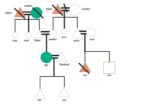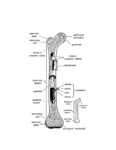The Stomach Explained
The stomach is a crucial organ in the digestive system, serving as a temporary receptacle for the storage and mechanical distribution of food before it is passed into the intestine. It is located in the anterior portion of the abdominal cavity in most vertebrates.
Anatomy and Location
The stomach is a J-shaped organ that is part of your gastrointestinal (GI) tract. It is located in your upper abdomen on the left side of your body. The top of your stomach connects to a valve called the esophageal sphincter, a muscle at the end of your esophagus. The stomach spans the region between the cardiac and pyloric orifices of the gastrointestinal tract.
Function
The primary function of your stomach is to digest food and send it to your small intestine. It has three main functions:
1. Temporarily store food.
2. Contract and relax to mix and break down food.
3. Produce enzymes and other specialized cells to digest food.
Digestive Process
The digestive process involves several steps:
1. Mouth: As you chew and swallow, your tongue pushes food into your throat.
2. Esophagus: Food travels down a hollow tube called the esophagus. At the bottom, your esophageal sphincter relaxes to let food pass to your stomach.
3. Stomach: Your stomach creates digestive juices and breaks down food. It holds food until it is ready to empty into your small intestine.
4. Small intestine: Food mixes with the digestive juices from your intestine, liver, and pancreas. Your intestinal walls absorb nutrients and water from food and send waste products to the large intestine.
5. Large intestine: Your large intestine turns waste products into stool. It pushes the stool into your rectum.
6. Rectum: The rectum is the lower portion of your large intestine. It stores stool until you have a bowel movement.
Microscopic Anatomy
The stomach consists of four layers: mucosa, submucosa, muscularis externa, and serosa. The mucosa layer contains the glands that produce the stomach’s digestive juices. These juices contain enzymes and hydrochloric acid, which help break down the food.
Blood Supply and Innervation
The stomach receives its blood supply mainly from the celiac trunk. Innervation is provided via the vagus nerves and the celiac plexus.
Conclusion
The stomach plays a vital role in the digestive process. Its ability to store, break down food, and produce digestive enzymes makes it an essential organ in the body. Understanding its structure and function can provide insights into how our bodies process the food we eat and convert it into the energy we need to survive..



